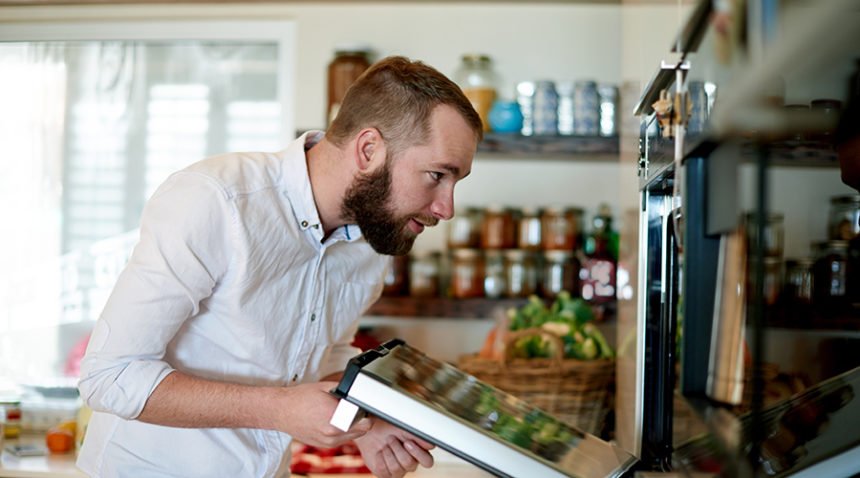While experiencing life during a pandemic, many of us have spent a lot of time wondering and worrying about ways we might catch COVID-19. Here’s some good news: The risk of getting COVID-19 from eating or handling food and food packages is considered very low.
We talked to Emily Sickbert-Bennett, PhD, director of UNC Medical Center Infection Prevention, to learn more.
How Foodborne Illnesses Spread
To understand why it is unlikely that you’ll get coronavirus disease 2019 (COVID-19) from the food you eat, it’s important to understand the two ways that foodborne illnesses are transmitted. The first is that the food itself is intrinsically contaminated.
“This occurs when you have contamination of food, such as lettuce or red onions, with a pathogen (an organism that causes disease, such as E. coli) that may have originated while it was growing or been introduced during distribution,” Dr. Sickbert-Bennett says.
In some cases, the pathogen normally exists in animals but is harmful to humans. For example, chickens carry salmonella and cows carry E. coli, which won’t make them sick but can cause illnesses in humans if meat is not cooked properly.
“If something is not done to either physically remove that pathogen or inactivate it, such as cooking or washing it, then these contaminated foods can cause foodborne illnesses in humans,” Dr. Sickbert-Bennett says.
The second way you can get a foodborne illness is when somebody who is handling your food is sick with a virus or bacteria and contaminates the food item during preparation.
“The most common ways for this to occur are through fecal-oral spread,” Dr. Sickbert-Bennett says.
For example, if someone with the norovirus, which is the virus that causes what’s often called the stomach flu, does not wash his or her hands properly after using the restroom and then handles food you consume, you could get the stomach bug too.
This transmission route—infected person handles food—is the only way you could get COVID-19 from your food, but it is unlikely, Dr. Sickbert-Bennett says.
“In order for COVID to have any potential foodborne contamination route, somebody would need to be sick with COVID while preparing your food, have a high enough viral load (the amount of virus a person has inside him or her), and cough or sneeze directly into or onto your food. In addition, the virus would have to be able to survive and persist in that food,” Dr. Sickbert-Bennett says. “It’s not an impossible scenario, but it’s not likely you could get COVID-19 in this way.”
The virus that causes COVID-19 can be killed at temperatures similar to that of other known viruses and bacteria found in food, so even if someone with COVID-19 handled your food, if that food is cooked or washed off thoroughly, it would inactivate or remove the virus.
COVID-19 on Food Packages
In the early weeks of the pandemic, some experts recommended disinfecting groceries and food packages or leaving nonperishables outside for 24 hours. As researchers have learned more about COVID-19, these precautions have proved unnecessary.
That’s because COVID-19 needs a live animal or human host to multiply and survive and cannot multiply on the surface of food packages. You do not need to disinfect food packaging, but you should always practice good hand hygiene when handling food.
Washing your hands with soap for 20 seconds removes and kills the virus that causes COVID-19. Therefore, even if the virus is on that package you brought into your house, as long as you thoroughly wash your hands after you handle it, you’ve killed and eliminated the virus.
How to Avoid COVID-19 When Buying Food or Getting Takeout
Even though there is no evidence that handling or consuming food is associated with COVID-19, there are safety tips you can follow to avoid getting the virus when picking up takeout, grocery shopping or visiting your local farmers market. These include:
- Wear a mask in public.
- Remain at least 6 feet from other people. To help people comply with this recommendation, many stores are limiting the number of shoppers who can be in the store at one time.
- As soon as you get back inside your car, use hand sanitizer, and then wash your hands thoroughly when you get home.
For the latest information on COVID-19, visit the CDC website and the UNC Health COVID-19 Resources page, and follow UNC Health on Twitter, Facebook, Instagram and YouTube.

